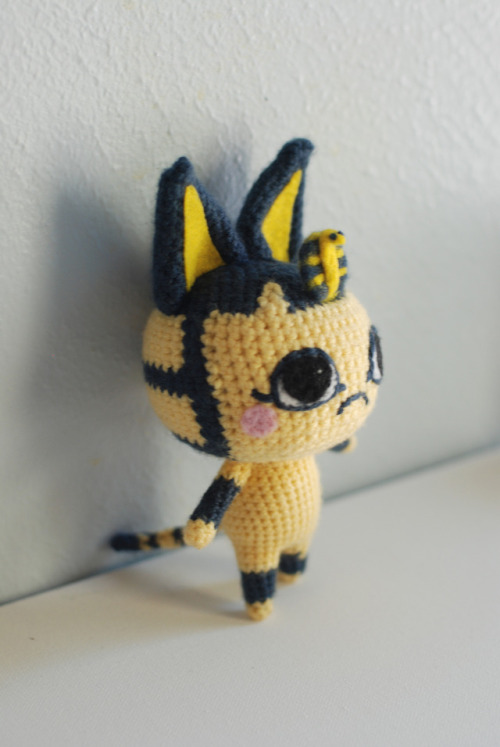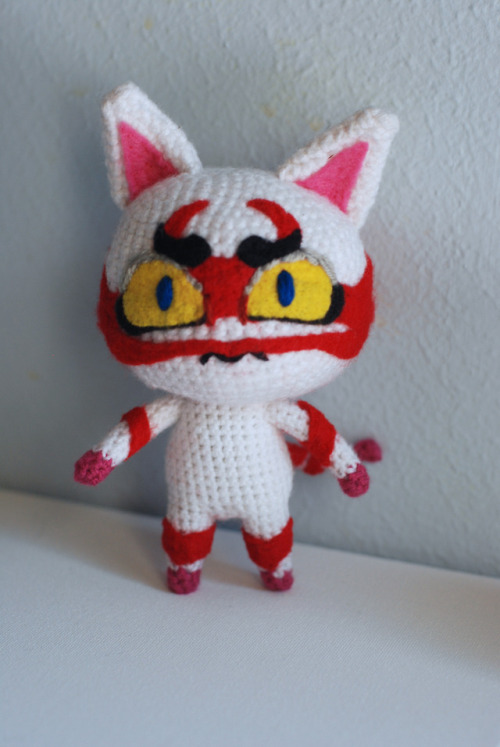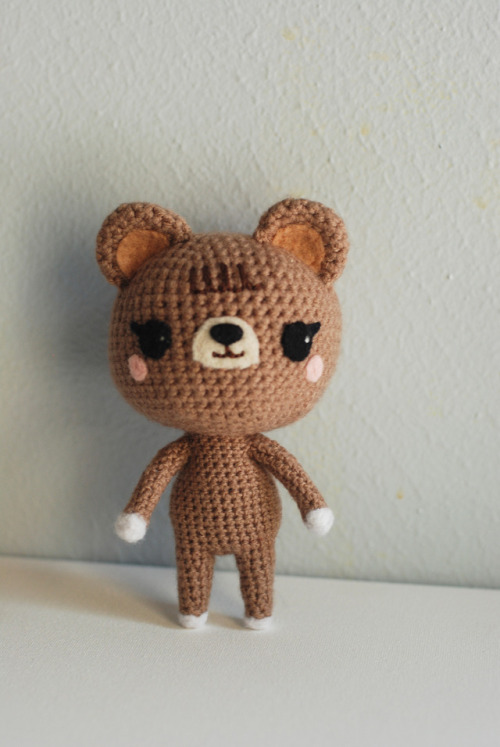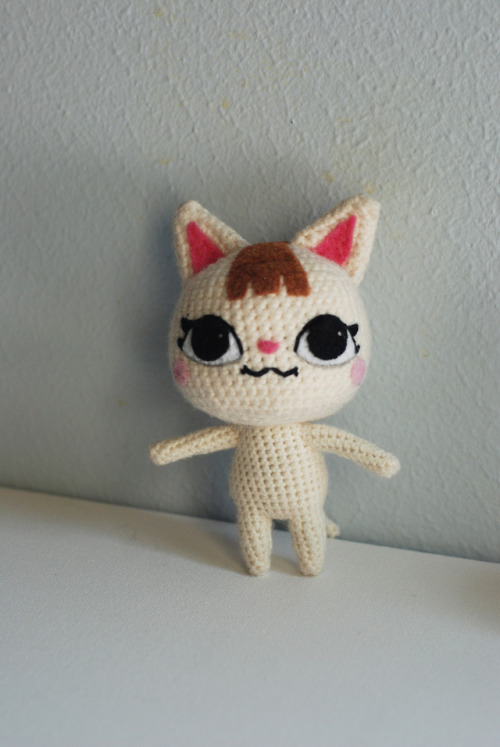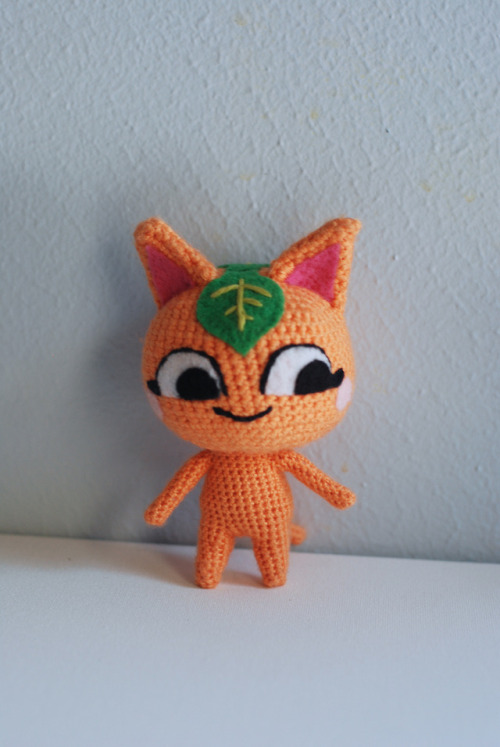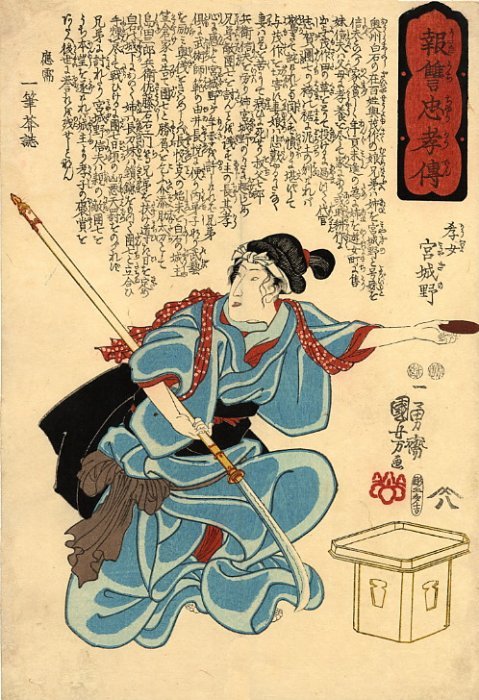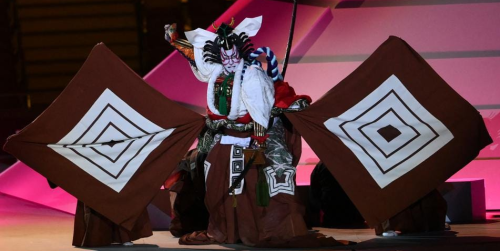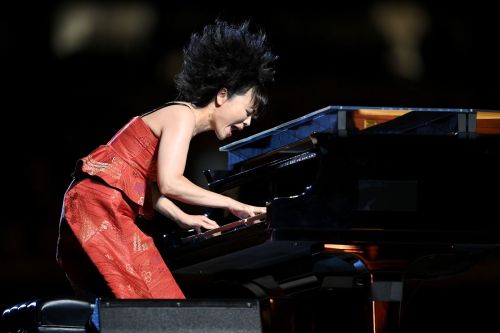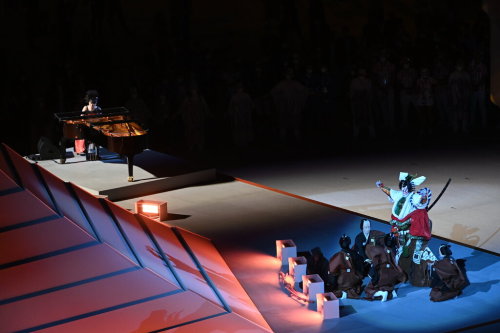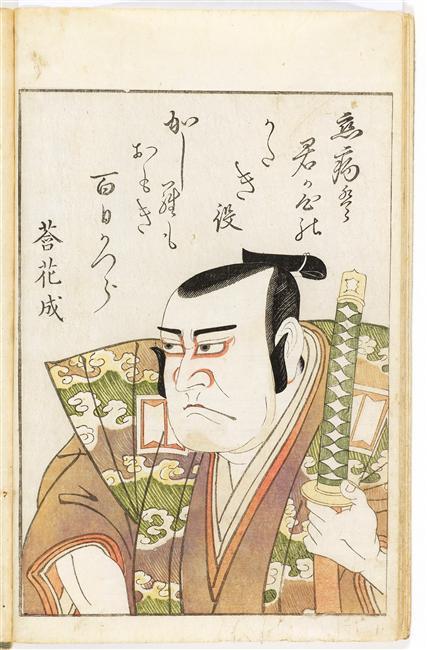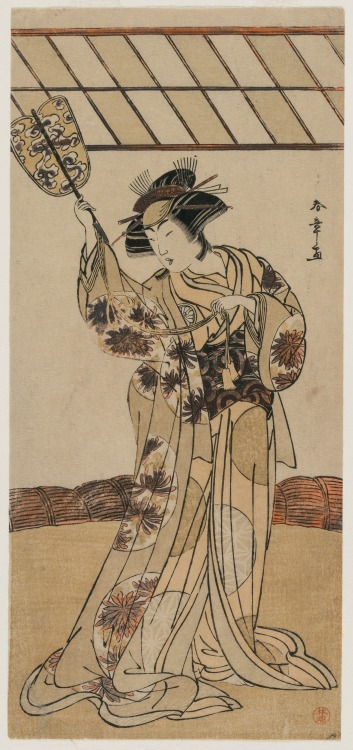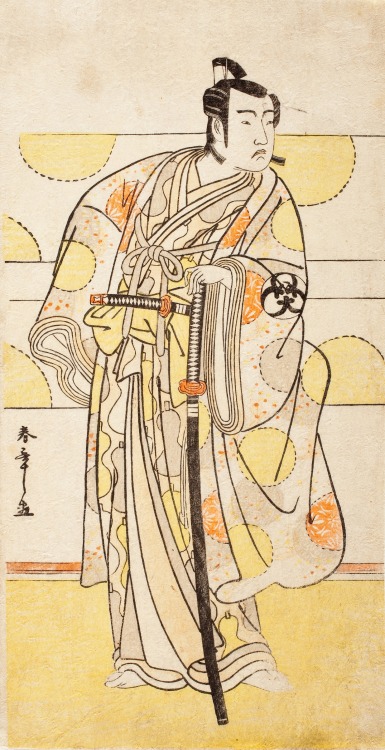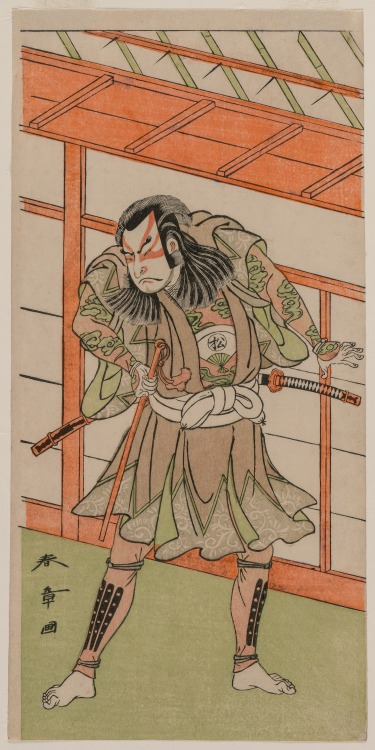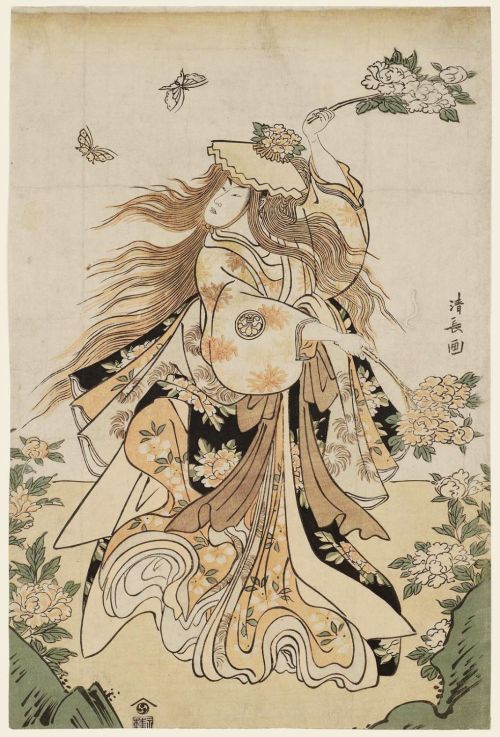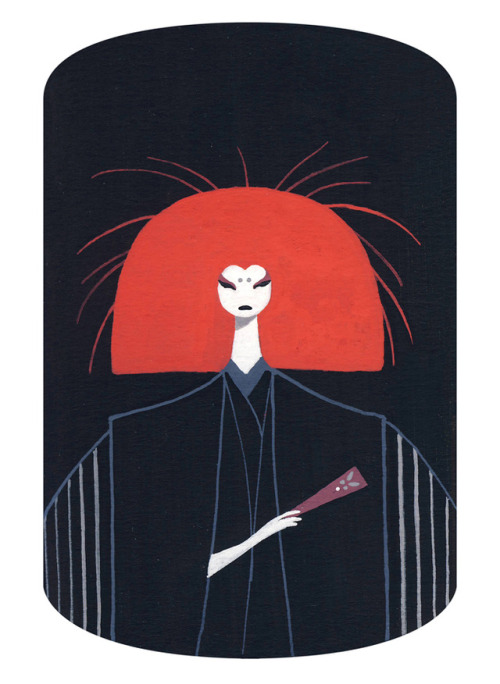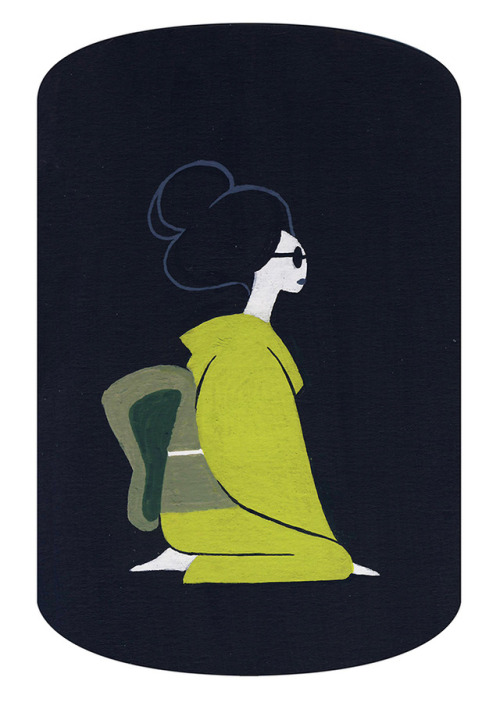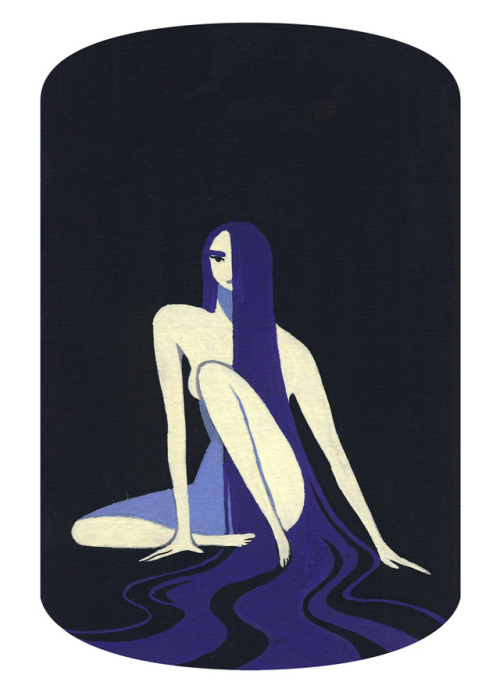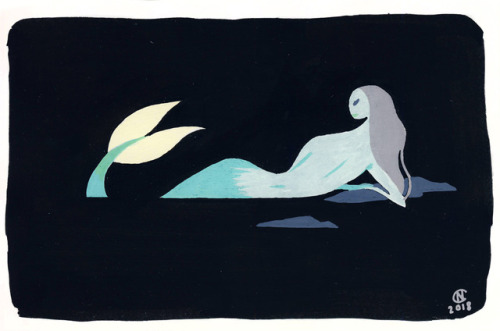#kabuki
Even more Animal Crossing Amigurumi :)
I’m a little busy with work, but I hope to have an Etsy shop open by next week!
Post link
“Miyagino the filial”, (1847/1848 ?), Utagawa Kuniyoshi (1797-1861)
Print from the series “Stories of dutifulness and loyalty in revenge”.
Depicts one of the two sisters who avenged their father during the 17th century. Their story inspired the kabuki play “Go Taiheiki shiraishi banashi” for instance.
Here the older sister, Miyagino, is represented carrying both a naginata and a sake cup.
Post link
Utagawa Toyokuni I, Segawa Kikunojō III, 1798, woodblock print.
Segawa Kikunojo III was a celebrated kabuki actor who posted exclusively female parts. The tradition of men playing women in the theatre was first encouraged to avoid licentious behaviour, but for many of these actors it was not a moral necessity but a serious way of life. For example they would continue to dress as women outside of Kabuki and would even become major trend setters among the female population. Their cultural influence is clearly apparent from the number of woodblock prints which were mass produced to glorify capture their image.
Post link
鷺娘
#calligraphy
#calligraphy
#art
#artwork
#sagimusume
#kabuki
#書道
#筆文字
#墨
#鷺娘
#歌舞伎
#鷺
#漢字
#kanji
https://www.instagram.com/p/Ca_z7TopIkw/?utm_medium=tumblr
Post link
Kabuki actor Ichikawa Ebizo & Jazz pianist Hiromi Uehara performing during the Tokyo Olympic opening ceremony.
Post link










- list of 10 popular folk dances in the world
(source: youtube)
suggestions for part 2?

An kabuki but drawn in mspaint for a amino challenge that I failed to stick to the rules of
The Pink Floyd: Apples And Oranges [American Bandstand, 7November1967]
I’d never seen this footage before. The contrivance of lip synch versus reality here is a thing of wonder. (Also, bonkers that they played a non-LP single that didn’t even see US release.)
Some artist trading cards for the theme “Trees with Faces”. I was inspired by kabuki masks and bonsai trees.
Post link
Miroirs des acteurs de kabuki (yakusha awase kagami)
Livre avec les portraits avec poèmes (kyôka) d'acteurs célèbres de kabuki . l'auteur des poèmes est Asakusa Ichindo (1755-1820). Editeur : Tôto (Edo) Yamadaya Sanshirô
Utagawa Toyokuni I (1769-1825)
1804
Japon
© RMN-Grand Palais (musée Guimet, Paris) / Thierry Ollivier
Section Japon du musée Guimet
Post link
24x36 acrylic on canvas. Thanks for those who stopped by and chilled on during the stream!! Happy Friday peeps :) #acrylicpainting #painting #kabuki
Post link
A Kabuki wrestler for this months #characterdesignchallenge on fb! ✨
.
.
#procreate #illustration #characterdesign #kabuki #animation #girlsinanimation
https://www.instagram.com/p/BwsBQg3lV7T/?utm_source=ig_tumblr_share&igshid=czk7o38d1zwz
Post link
May 27th - Kabuki Performance
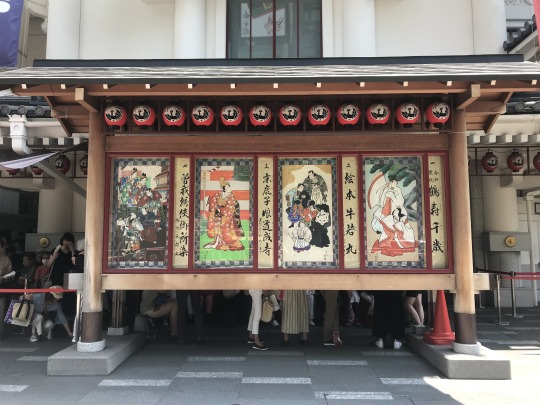
Posters advertising the current shows at Kabukiza theater
Today we spent the majority of the day at a kabuki performance. Traditionally, these events take all day, but we went to a shortened version that ran from 11-3:30. The theater was located in Ginza and was the largest kabuki theater in Japan. We walked in and got portable translators, which added live subtitles to the show. Because these plays have multiple acts and scenes, they can take hours to complete. Usually, one or two scenes from several shows are performed together, showing the best from each show.
The first performance was The Revenge of the Soga Brothers, and this was my least favorite of the three. The story, though funny in retelling, took very long to go anywhere. This was
The final play was slightly different because 4 scenes were shown. I actually felt the most at home watching this one, as it was the most modern and the closest to a western play in style. There was an introduction to the issue between the wrestlers and the firemen, an intense home drama scene, and a dynamic fight scene that I loved watching. If anything, I didn’t like that we were on the balcony level, as the stage-fighting was meant to be seen from the 1st floor. So there were some funny moments where things very clearly didn't touch but the actors would still roll on the floor after the ‘impact.’
After this, we headed home. We passed James, another UF student not on the program, randomly on a crosswalk right outside our apartment! It was such a crazy coincidence, but we couldn’t talk for long because his program had something to do. Then we had early dinner of (more)
Academic Reflection
Reading the kabuki play last night, it was interesting to see all of the similarities between western theater tropes and kabuki, even though they were developed without any connection to one another. Both were used to make fun of higher classes, and both also used the comedy of 3s, where a joke is repeated 3 times for maximum effect. Additionally, although the staging of much of the scenes had minimal movement, the stage pictures created used the same tactics as western theater. In the first one, the lord was situated in the middle and upstage, suggesting power. Additionally, the two female characters were slightly offset from one another, which created visual interest.
Another interesting thing was that the females were all played by male actors. This is the same as Shakespearian theater, however, in other areas of the world women have been allowed back into the theater sphere. This hasn’t translated yet in Japan, so the female characters were fun to watch. Their voices were strangely high and very nasally, but it was impressive how well the men mimicked the movement of a female body. Traditionally, these men set fashion trends for actual women, which I can definitely understand. The outfits worn on stage were extravagant to a fault, and I loved watching the flashy jewelry and vivid colors on stage.
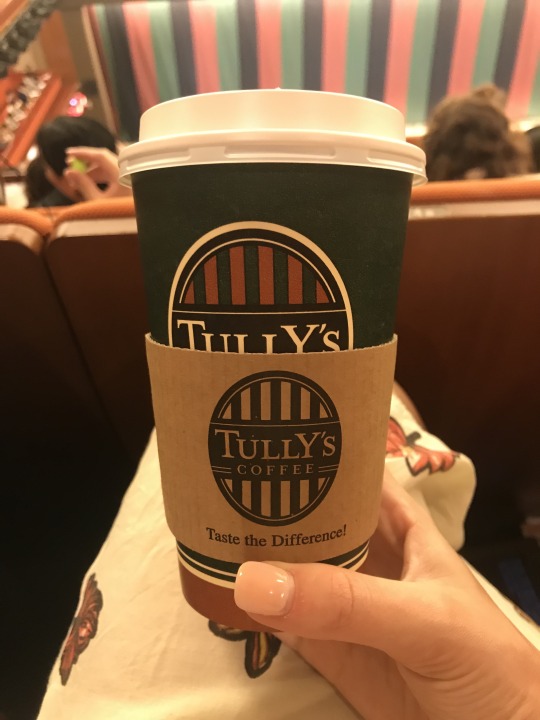
The reason I stayed alert during the first act

Automatic subtitle machine at the theater

Outside of the Kabukiza theater

Backdrop between shows in the intermission between shows
May 19th - Asakusa / Tokyo Edo Museum
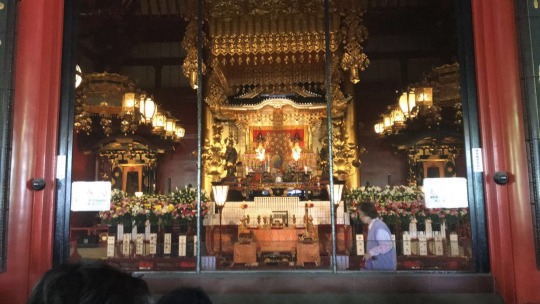
Inside of the Asakusa Temple
Today started super early - I woke up at 3am and couldn’t get back to sleep. From my window I got to see the sunrise at 4:30, and I finished the first set of readings, so it wasn’t all bad. I met up with friends for breakfast, and then we had a short informational meeting about the program. Then we got our subway cards and headed to the Asakusa Buddhist temple. The front of the temple was filled with tourist-centric stores. We got our fortunes for 100¥ - if a bad fortune is received, you can tie the paper up around the temple to counteract it. Then entered the temple. Inside there was a mass of people going to the front to throw a coin in and bow. We had a bit of time to ourselves to look at the shops and grab lunch, and then we made our way to the Tokyo Edo Museum. Here, we first saw small replicas of the palace and artifacts that they would use, such as a palanquin. Downstairs held exhibits about the commoners of the time. The woodblock printing area was super cool, and we got to see how many steps there were in the process. There was also a section on modern Tokyo, including the introduction of cars, newsprint, and Western architecture. I barely made it home I was so tired, but I plan to pick up some groceries and head to bed soon.
Academic Reflection
The readings for today focused on Buddhism and the Tokugawa period of Tokyo. The Porcu piece touched upon the separation between Buddhism and Shintoism, so it surprised me when a Shinto event occurring outside the temple. Becuase Japan is entering a new era, the Shinto group in the area was sharing the space to celebrate the event. I thought that the two groups would be more separate, but it appeared as though they had a good relationship. Many people, whether they were there to pay their respects at the Buddhist temple or for the Shinto activity, were excited to see the activities as they passed down the center of the street.
Additionally, one of the readings focused mainly on woodblock printing. This allowed for a mass print culture to exist in Tokyo much earlier than in many parts of the world and is one of the reasons Tokyo in this time is considered pre-modern. From this, literacy rates were higher as books were made, and woodblock art was very popular. There is something about the woodblock printing that I feel needs to be seen to understand. I, along with many of my peers, was under the impression that the woodblock was one carved piece, and the prints were later painted to add color. However, at the museum, we saw a total of 8 wood carvings used to create one print. Each one creates a different layer of color and depth on top of the last one.
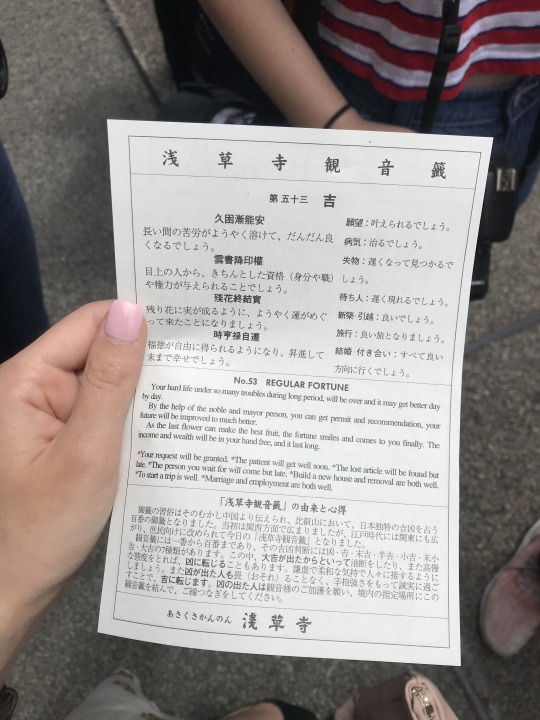
My fortune, received at Asakusa.

A demonstration of woodblock printing and the steps behind it at Tokyo Edo Museum
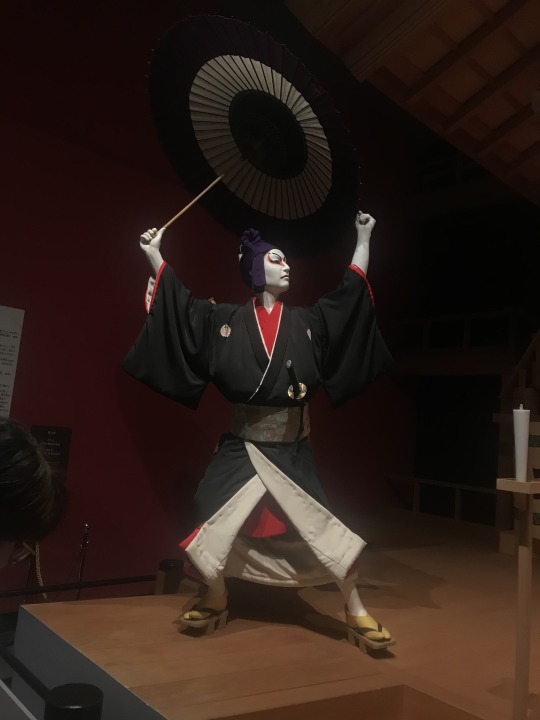
A replica of a Kabuki actor
(Torii) Kiyonaga,Actor Segawa Kikunojô III Performing the Lion Dance in the Play Shakkyô
1789, woodblock print; ink and color on paper, 37.2 x 24.9 cm, Museum of Fine Arts Boston
Post link
I recently bought Posca & Molotow acrylic markers and I’m having a blast!
These are very small, A6 postcard size… I might sell some of them on my online shop, stay tuned!
Happy New Year everyoneeeee
bye
Post link
I painted Kabuki in a traditional kabuki outfit ! Hope you’ll enjoy !
- Dango
You can see different versions of this draw on insta : @dango.and.chain
Post link


